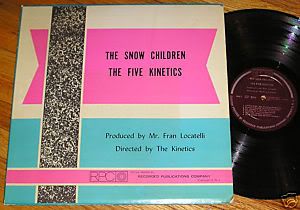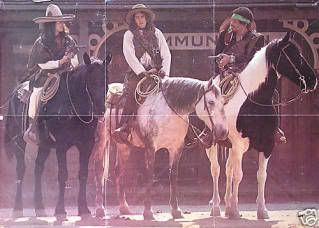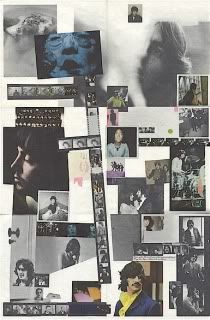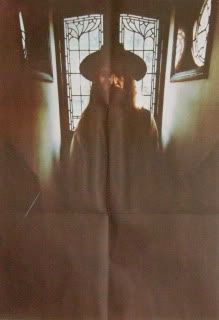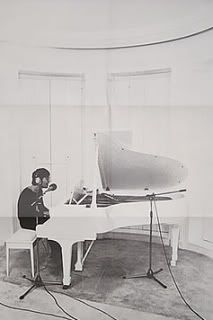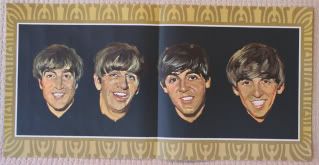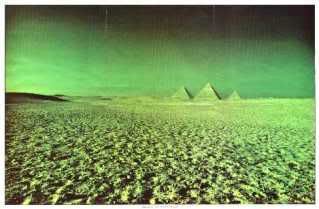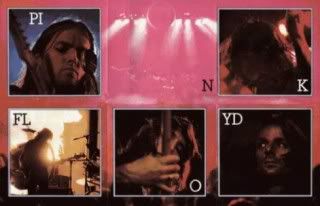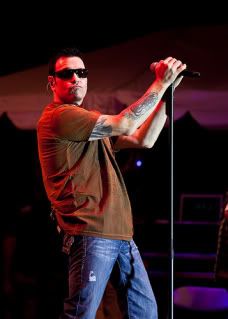
Singer Steve Harwell led rock
group Smash Mouth through an energetic
90-minute set at the Upper Peninsula
State Fair on Aug. 21.
By STEVE SEYMOUR
California rock band Smash Mouth entertained a primarily youthful audience at the Upper Peninsula State Fair on Aug. 21.
Formed in San Jose in 1994, Smash Mouth has incorporated vintage rock 'n' roll styles, such as ska, punk and surf into their music, giving it broad appeal.
The group performing in Escanaba included core members Steve Harwell (lead vocals), Paul DeLisle (bass) and Michael Urbano (drums). Touring members Michael "Hippy" Klooster (keyboards) and Leroy Miller (guitar) also appeared. Miller replaced original guitarist Greg Camp.
Camp, the group's main song writer, quit Smash Mouth in 2008, releasing a solo album, but reportedly re-joined the band in June.
During an energetic 90-minute performance before a near-capacity grandstand crowd, Smash Mouth roared through a 24-song set of hit singles, album cuts, cover tunes and one song made-up on the spot.
The free concert was sponsored by the Island Resort and Casino.
My wife Sue and I attended the show with friends Rod and Marcy Maynard, who were taking their five-year-old son Tyler to his first rock concert.
Smash Mouth opened with a revved-up take on "Can't Get Enough Of You Baby," an old rhythm and blues number written by Sandy Linzer and Denny Randell. The song was first released by all-girl group the Toys in 1966, but failed as a single. Featured in the movie "Can't Hardly Wait," Smash Mouth enjoyed a hit with their version of the song in the summer of 1998.
The band dug deep into its past for "Beer Googles," an early group composition from their first album, "Fush Yu Mang," released on Interscope Records.
Next came another original, "Then the Morning Comes, a No. 11 hit, featuring a nifty guitar solo by Miller.
"Diggin' Your Scene" followed, showcasing Urbano's drumming and Klooster's wild keyboard work.
Both retro-sounding tunes came from the band's "Astro Lounge" compact disc, released in 1999. The album marked the band's commercial and artistic peak.
Smash Mouth displayed an energetic stage presence, with the long-haired Miller commanding attention and Klooster playing his keyboard like a whirling dervish.
Turning to its "Summer Girl" disc, released on the band's own Beautiful Bomb label, Harwell led the group through "Everyday Superhero," "Getaway Car," "Story of My Life" and "The Crawl."
The first track from their self-titled "Smash Mouth" disc appeared next with "Holiday In My Head." "Are we having fun, yet?" Harwell asked. A group of local girls danced on stage as the Smash Mouth frontman sang the number.
"The Fonz," a tune referencing a character portrayed by Henry Winkler on the "Happy Days" television series, followed.
A small mosh pit opened among the 500 or so fans gathered at the front of the stage.
Smash Mouth kept rocking with "Come On, Come On." Harwell, who co-wrote the tune with Camp, introduced the song as "old school Smash Mouth." The song was featured on the soundtrack to the film "Snow Day."
Slotted next was a group composition and the band's biggest hit. "Walkin' On the Sun" topped out at No. 2 on the pop chart in the summer of 1997 and fired-up the crowd.
"Come on boys, let's kick it up a little, now," Harwell announced as the band tackled "Waste" from "Astro Lounge."
"I'm going to party with you," Harwell improvised with the band playing along for a short time. "I just made that up on the fly," Harwell told the crowd.
Then Smash Mouth launched into "Quality Control" from "Summer Girl" and "Always Gets Her Way" from the "Get The Picture" album.
They returned to "Summer Girl" for "Hey L. A." and "So Insane," the group's most-recent single.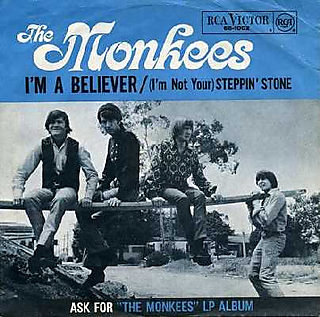
The band delved into the past again for "I'm A Believer," their hit from 2001. Composed by Neil Diamond, "I'm A Believer" was a chart-topper for the Monkees in 1967.
Smash Mouth left the stage at this point but returned to the drumming of Urbano, Harwell calling him "the greatest drummer I've ever known."
Keeping the classic vibe going during the encore, the band honored the veteran rock group Van Halen with "Runnin' With the Devil" and "Ain't Talkin' 'Bout Love." The crowd roared its approval.
For good measure they added "You Really Got Me," the Kinks tune which Van Halen covered for their first hit in 1978.
After the oldies segment, Harwell asked the audience to pray for Taytem Drossard, a local girl being treated for cancer. Smash Mouth played "Let's Rock," another "Fush Yu Mang" staple, as a tribute to her.
Fittingly, they closed the evening with "All Star," the opening number on their "All Star Smash Hits" package, released on Universal Records in 2005. Also found on "Astro Lounge" and the soundtracks to "Mystery Men," "Inspector Gadget," "Shrek" and "Rat Race," the ubiquitous track was the Top Ten hit you couldn't escape in the summer of 1999.
In the end, the band's electrifying set included a crowd-pleasing mix of hits, choice CD tracks and clever cover songs.
Named after a football term coined by Chicago Bears coach Mike Ditka, Smash Mouth delivered an Upper Peninsula show as exciting as their name implies.



